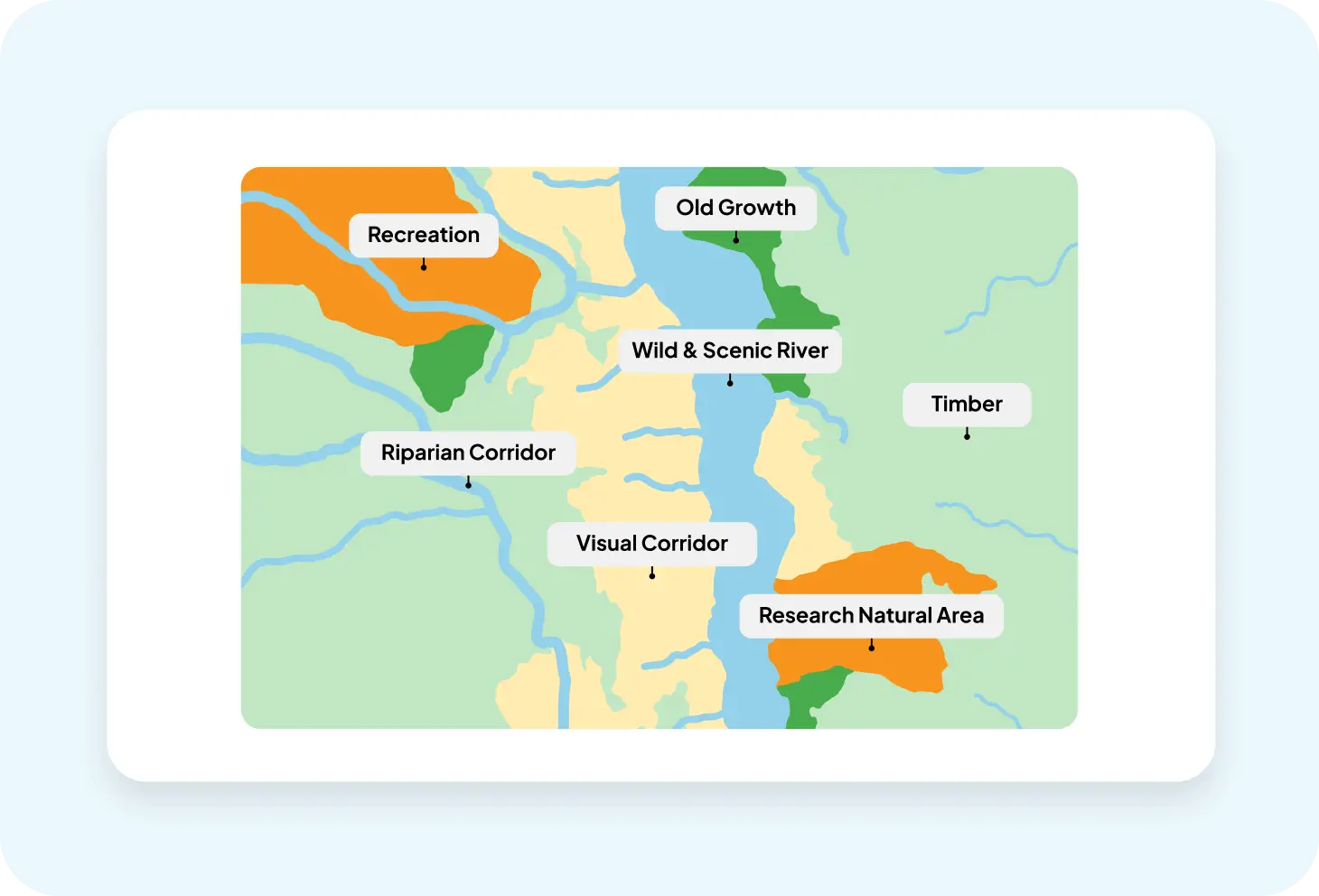The Scenario Investment Planning Platform provided the Forest Service with tools to identify cross-boundary management priorities as part of the shared stewardship initiative. Scenario planning tools are an essential part of building consensus among landowners as a way to expand the restoration footprint to achieve desired outcomes on the ground.
Accomplish more with ForSys
ForSys solves typical spatial planning problems where treatments are allocated to optimize one or more restoration objectives accounting for multiple hierarchical spatial constraints and treatment thresholds. The speed and simplicity of the model allows for the exploration of hundreds of scenarios to fully explore the tradeoffs inherent in land management decisions, rather than finding one optimal solution. Results help communicate decisions to stakeholders and identify opportunities to more efficiently leverage resources.

Check main features





Why we are different than other tools
Planscape

ForSys
Land Tender
Marxan.org
Testimonials
Start UsingForSys
ForSys is designed to help managers create spatial prioritization plans that meet predefined goals and targets while considering constraints to achieve them. The model was developed with an emphasis for wide application by non-technical users. ForSys was developed for multiple platforms including windows desktop (ForSysX) and in R (ForSysR). You can find out more about the differences between the two platforms in the Getting Started with ForSys Tutorial. ForSysR can be accessed through the link below; ForSysX can accessed using the form on the right.



















.png)

